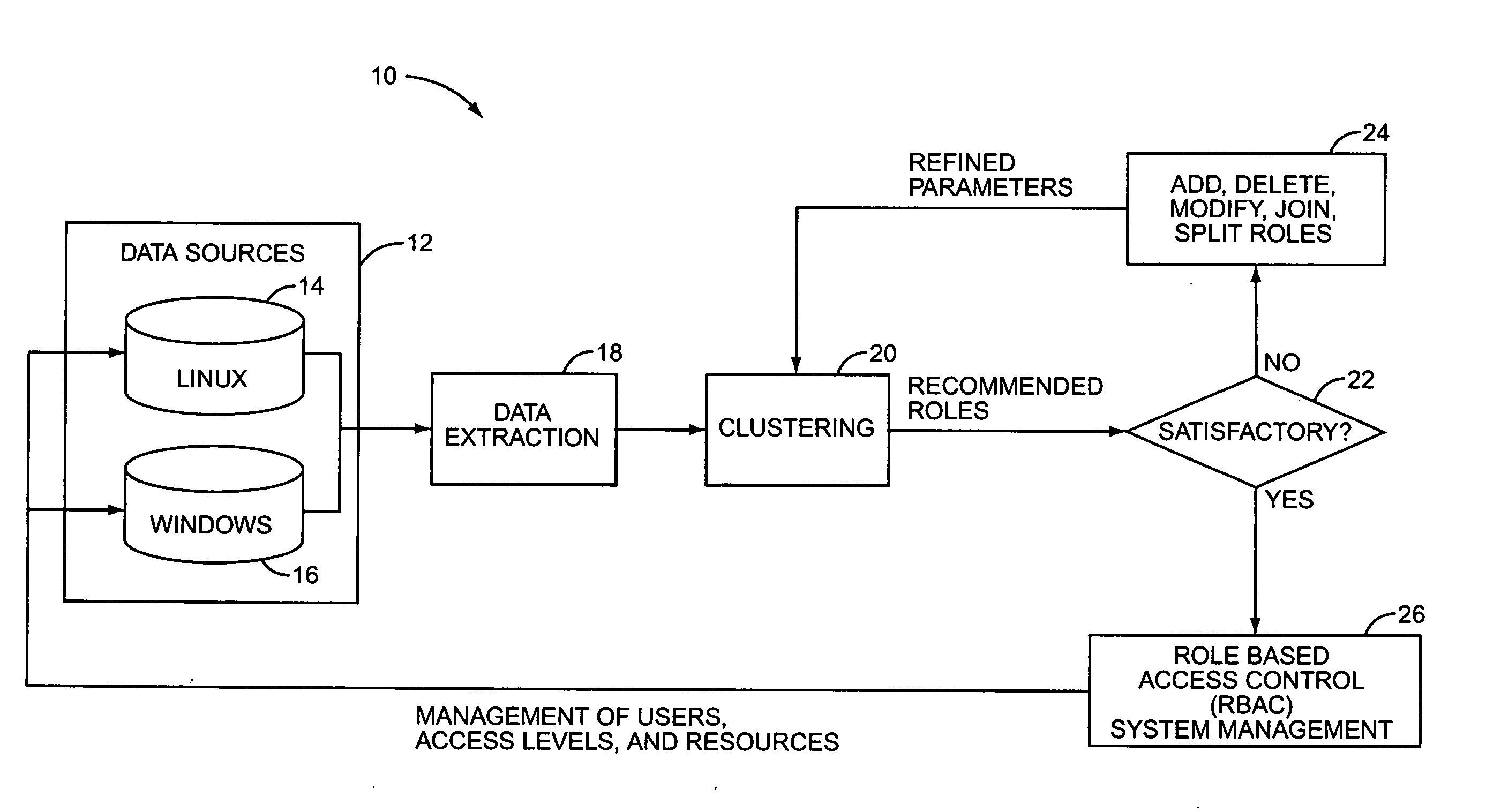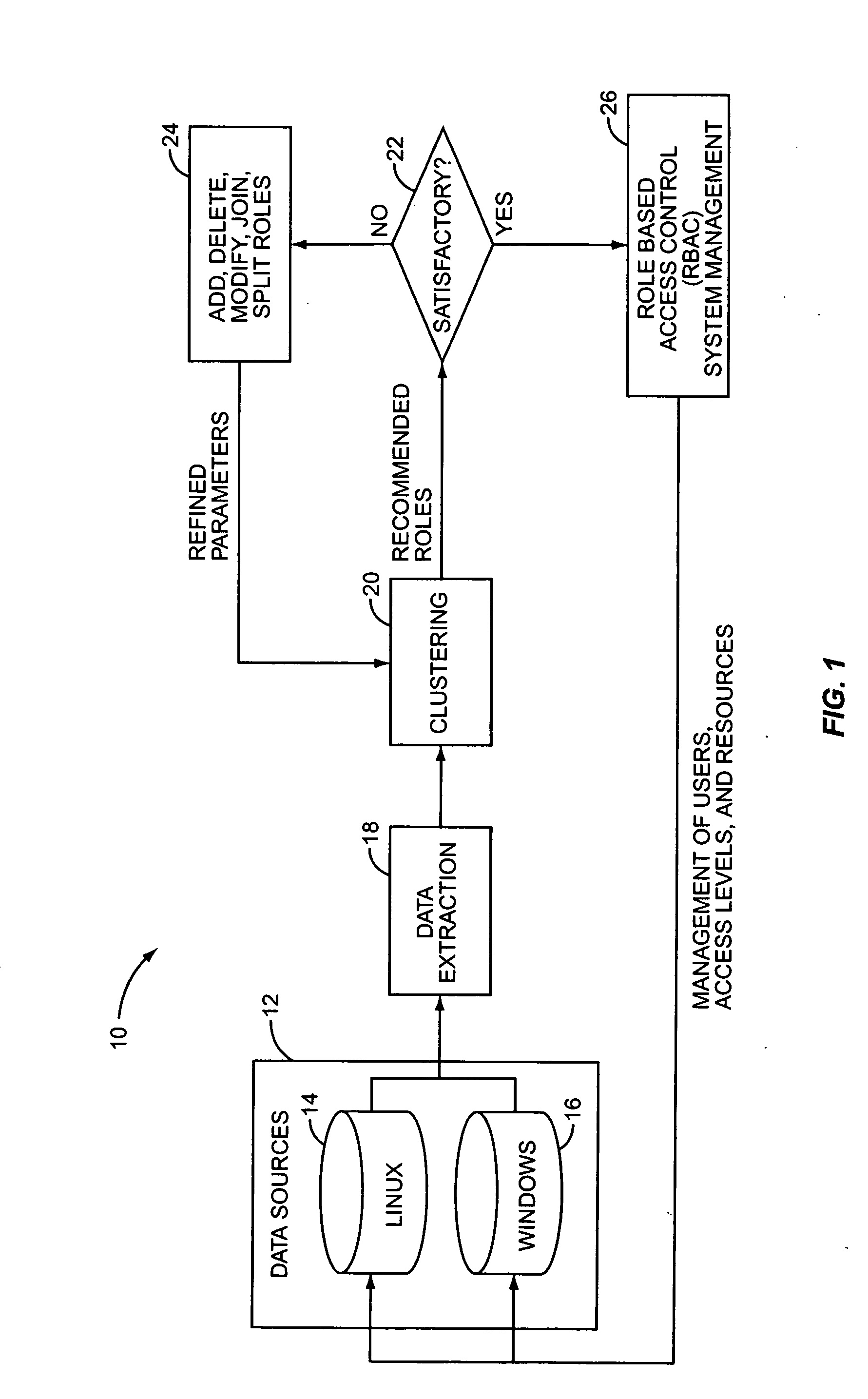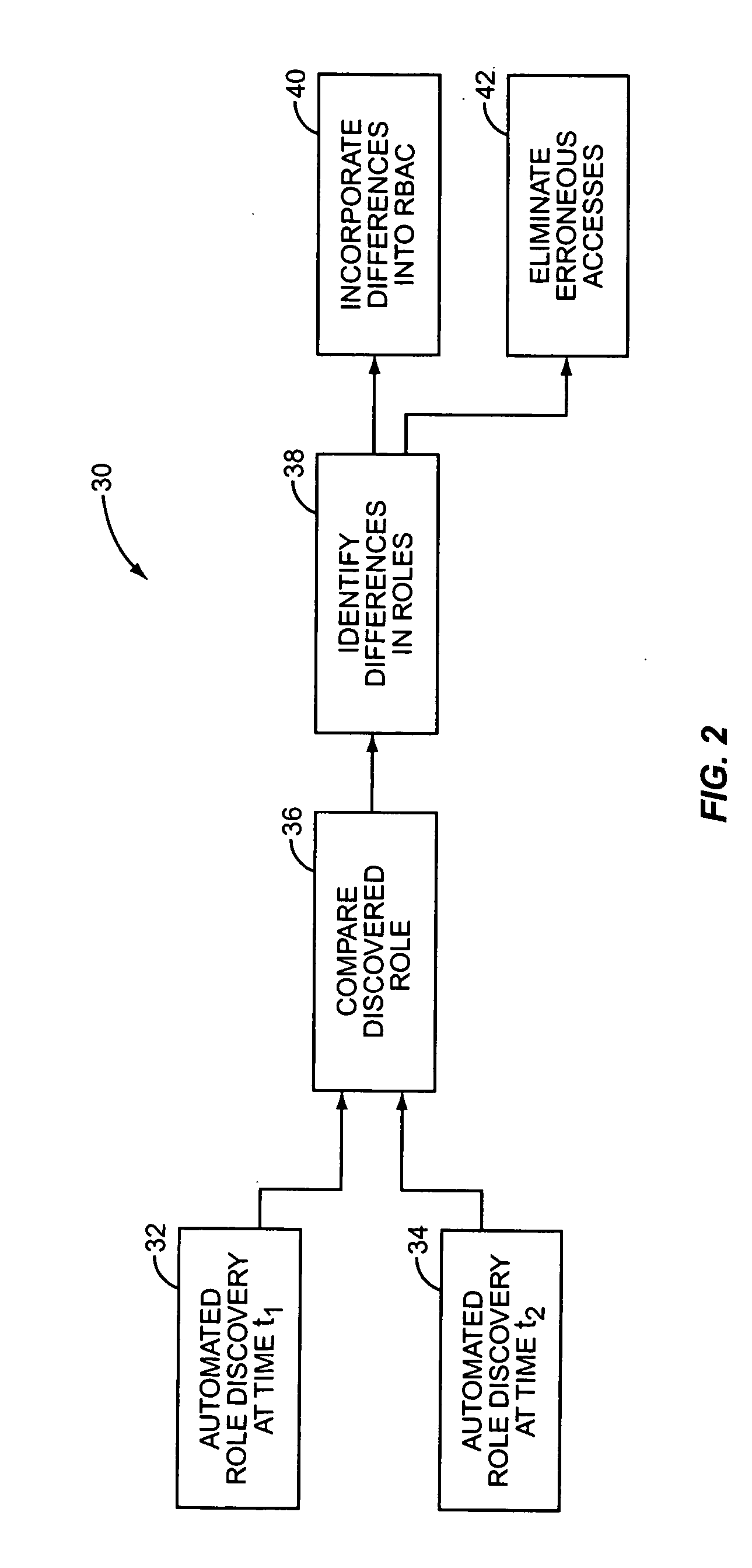Automated role discovery
a role discovery and role technology, applied in the software field, can solve the problems of limited access and the need for substantial time and resources in the “top-down” process
- Summary
- Abstract
- Description
- Claims
- Application Information
AI Technical Summary
Benefits of technology
Problems solved by technology
Method used
Image
Examples
Embodiment Construction
[0013] In contrast to the “top-down” role definition process of the prior art, the present invention relates to a “bottom-up” role discovery process. In this process, existing roles in the organization are discovered by an analysis of the organization's IT infrastructure. In particular, access roles are discovered by an analysis of the existing IT system security structure. For example, user entitlement data—the systems, programs, resources, and data that a user has permission to access or modify—may be extracted for each user from the existing IT system. Users with the same or similar entitlements may then be intelligently clustered into groups that reflect their actual, existing roles within the organization. Not only does the bottom-up method of role discovery avoid the significant investment in time and effort required to define roles in a top-down process, it may also circumvent a disconnect between an organization's perceived roles and its actual roles. That is, the bottom-up ...
PUM
 Login to View More
Login to View More Abstract
Description
Claims
Application Information
 Login to View More
Login to View More - R&D
- Intellectual Property
- Life Sciences
- Materials
- Tech Scout
- Unparalleled Data Quality
- Higher Quality Content
- 60% Fewer Hallucinations
Browse by: Latest US Patents, China's latest patents, Technical Efficacy Thesaurus, Application Domain, Technology Topic, Popular Technical Reports.
© 2025 PatSnap. All rights reserved.Legal|Privacy policy|Modern Slavery Act Transparency Statement|Sitemap|About US| Contact US: help@patsnap.com



